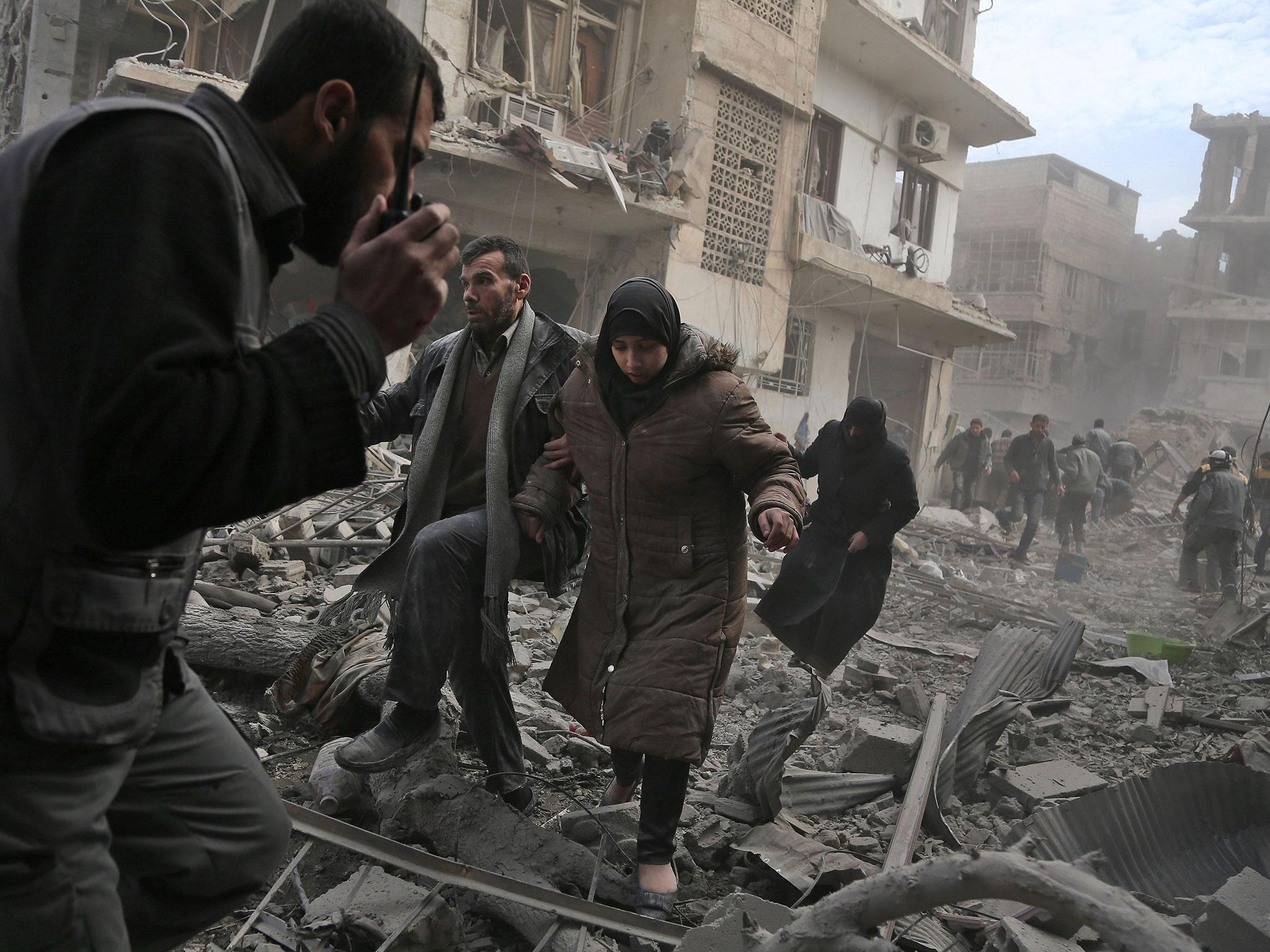This could be the last siege of the Syrian war
Eastern Ghouta has held out longest because it was large, strongly held and could grow part of its own food. But last year the government tightened the siege


Your support helps us to tell the story
From reproductive rights to climate change to Big Tech, The Independent is on the ground when the story is developing. Whether it's investigating the financials of Elon Musk's pro-Trump PAC or producing our latest documentary, 'The A Word', which shines a light on the American women fighting for reproductive rights, we know how important it is to parse out the facts from the messaging.
At such a critical moment in US history, we need reporters on the ground. Your donation allows us to keep sending journalists to speak to both sides of the story.
The Independent is trusted by Americans across the entire political spectrum. And unlike many other quality news outlets, we choose not to lock Americans out of our reporting and analysis with paywalls. We believe quality journalism should be available to everyone, paid for by those who can afford it.
Your support makes all the difference.Syrian artillery and aircraft are bombarding Eastern Ghouta, the last big rebel enclave which is just to the east of Damascus. Some 127 people were reported to have been killed on Monday alone. By Tuesday evening that figure was said to have doubled. The strength of the attack by shellfire, bombs and missiles is more intense than anything seen in the area for several years, suggesting that an all-out ground assault is in prospect or, as in East Aleppo just over a year ago, there will be a last minute attempt to negotiate a mass evacuation.
The siege of Eastern Ghouta could be the last of the big sieges that have characterised the war in Syria for the last five or six years and has made it such a destructive conflict. Early on in the war, government forces adapted the strategy of abandoning opposition strongholds, surrounding them and concentrating pro-government forces in defence of loyalist areas, essential roads and important urban areas. The rebel enclaves were sealed off with checkpoints and the people inside were subjected to regular bombardment.
Once there were many such areas, almost encircling Damascus which has a population of around five million. Some districts, like Daraya in the south of the capital, were emptied out early and their buildings still stand but are gutted and uninhabitable. Other opposition enclaves, notably those in north Damascus, have been levelled by gunfire or demolition teams so hardly a single building stands more than a few feet high.
Eastern Ghouta is just a few miles to the east of the capital and is an extensive urban and agricultural area with an estimated population of 400,000 which was loosely besieged after 2013. There were shortages of medical supplies, machinery spare parts and other high value items though not of basic food supplies. But last year the government tightened the siege, closing the informal tunnel system through which fuel and food had been coming in. By January this year, the cost of a basket of essential food items in Eastern Ghouta was 780 per cent higher than in government-held areas a few miles away.
The government has been advancing all over Syria since Russian military intervention in 2015. Besieged rebel areas have been falling one by one, the fighters and the civilian population sympathising with them often going to Idlib in northwest Syria. In Daraya, they left in the summer of 2016 and East Aleppo fell at the end of the same year. Eastern Ghouta has held out longest because it was large, strongly held and could grow part of its own food. But the rebel factions in control were divided, occasionally fought each other and had no strategy to counter the Syrian army’s steady advances other than firing mortars into pro-government districts like Christian Bab Touma in the Damascus Old City.
Living conditions have been deteriorating because of lack of goods or, even when they are available at high prices, people have no money to pay for them. Where food is permitted to enter the Eastern Ghouta enclave, it is subjected to a high fee for every kilo imported. Aid workers say that nobody died of starvation in January, but many people are suffering from malnutrition. As shelling and airstrikes intensified last month, all schools closed.
With Syrian government forces either victorious or not engaged in full scale combat in much of the country, it has more soldiers and air power to concentrate on remaining rebel strongholds in Eastern Ghouta and Idlib. But there is a growing confrontation between President Bashar al-Assad and Turkey in the northern Kurdish enclave of Afrin. Turkish artillery has been shelling on Tuesday the government held entry point to Afrin down which pro-government fighters armed with heavy machine guns have been driving as part of their new alliance with the Kurds.
The Syrian and – to a lesser extent – the Iraqi wars have been wars of sieges in which limited numbers of ground troops are deployed, but are supported by massive air power. This was true of the Syrian government and Russians against Isis, al-Qaeda linked groups and jihadi rebels. But it was also true of the Kurdish YPG (People’s Protection Units) backed by US airpower in the four month siege of Raqqa and the Iraqi Army, also backed by the US air force and its own artillery, in the nine-month siege of Mosul. The latter was probably the bloodiest of all these sieges because of the size of the city, the ferocity of the fighting and the refusal of Isis to allow the civilian population to escape from West Mosul and from the close-packed Old City.
Join our commenting forum
Join thought-provoking conversations, follow other Independent readers and see their replies
Comments